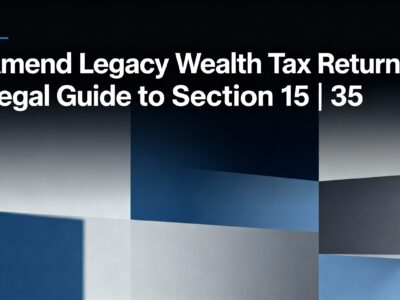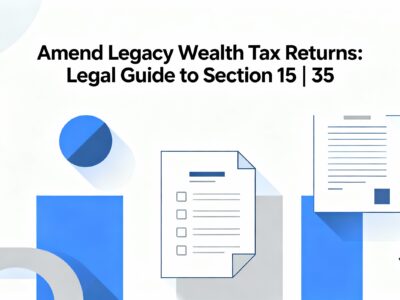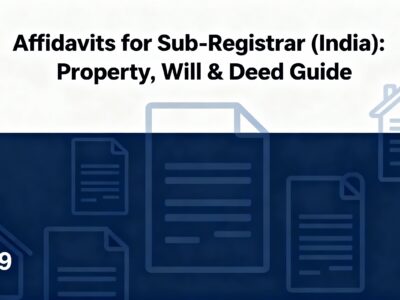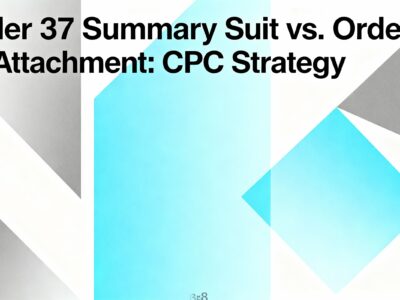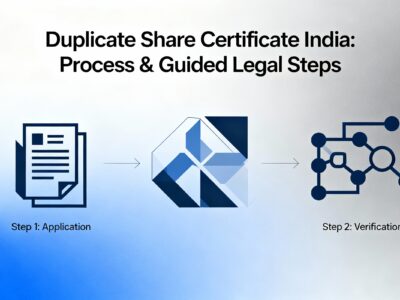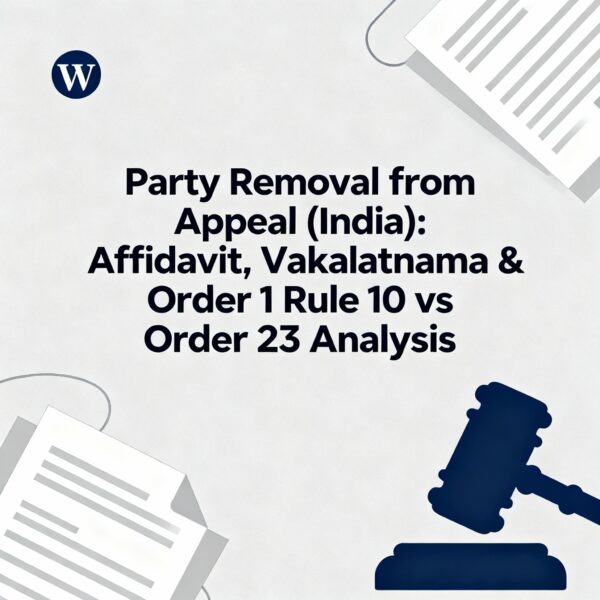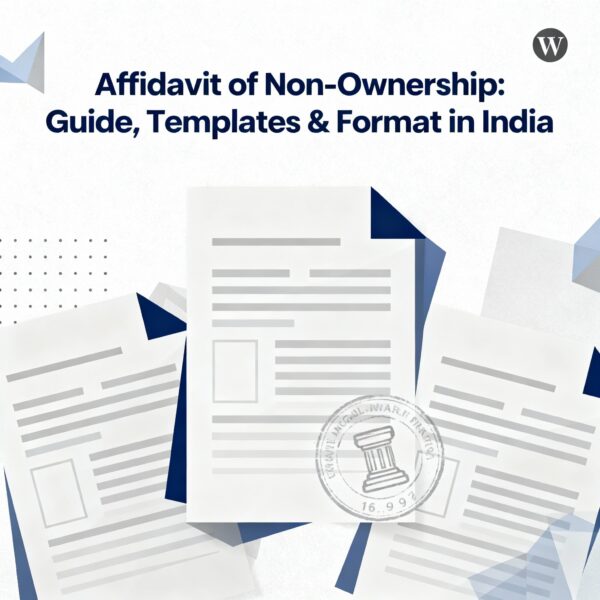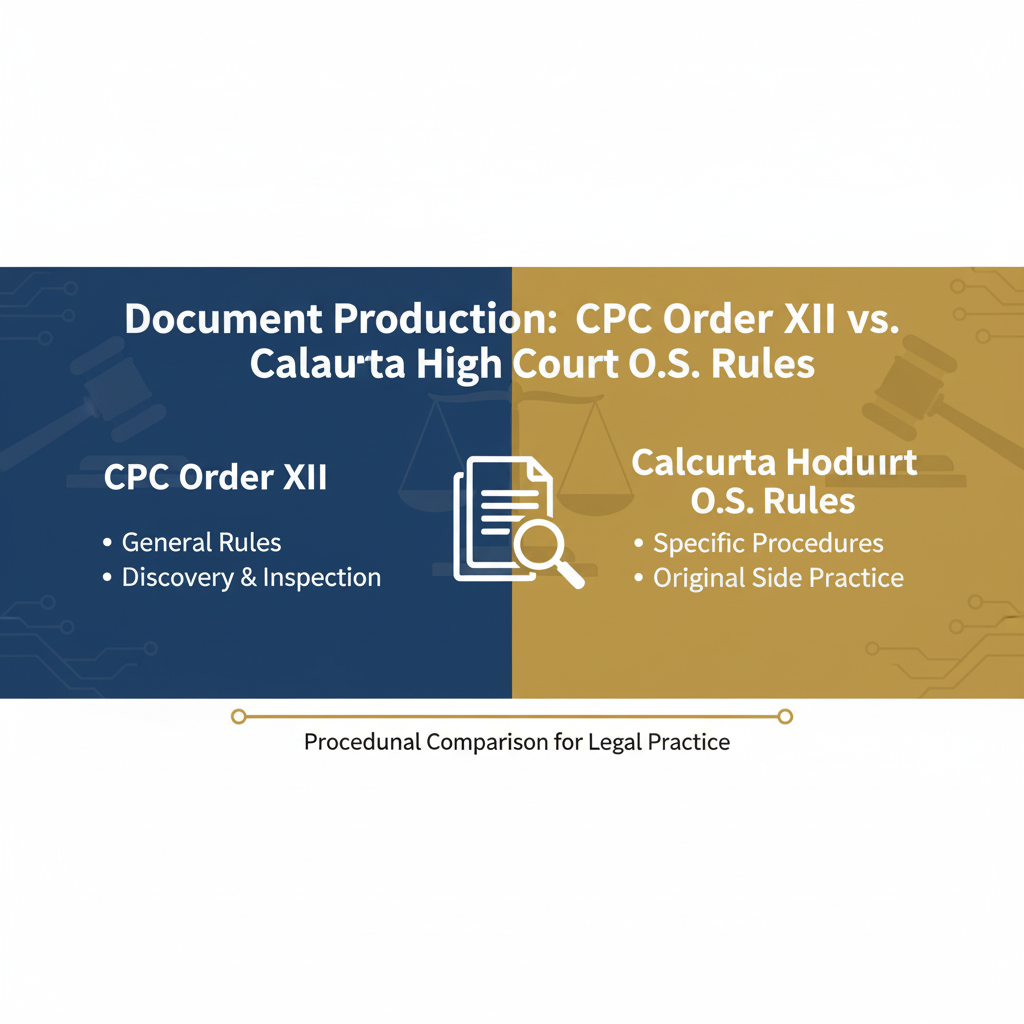MACT Claims 2025: Guide to Drafting Petitions & Affidavits in India
Navigating the complexities of the Motor Accidents Claims Tribunal (MACT) in India can be daunting. This definitive guide for 2025 is designed to provide legal practitioners and claimants with a comprehensive, step-by-step framework for successfully drafting and filing MACT claim petitions and supporting affidavits.
We delve into the core principles of the Motor Vehicles Act, 1988, break down the landmark Supreme Court judgments that govern compensation, and provide practical tools to streamline your process. From an interactive compensation calculator based on the Pranay Sethi principles to a multi-language draft repository and a mandatory document checklist, this resource is your one-stop solution for securing just compensation.
Drafting MACT Claim Petitions & Affidavits in India
An interactive, in-depth guide for legal practitioners on the intricacies of the Motor Accidents Claims Tribunal (MACT) process, updated for October 2025.
Foundational Legal Framework
The Motor Vehicles Act, 1988
The M.V. Act, 1988, is the cornerstone of motor accident compensation law in India. It mandates third-party insurance (Sec 146), establishes a claims process (Sec 166), and provides for no-fault liability (Sec 140) to ensure swift relief for victims. This Act creates a self-contained system for efficient adjudication.
The Motor Accidents Claims Tribunal (MACT)
MACT is a specialized quasi-judicial body with exclusive jurisdiction over motor accident claims. It follows a summary procedure, not strictly bound by the Civil Procedure Code, to expedite justice. This flexibility is why affidavits are crucial, often serving as the primary evidence (Evidence-in-Chief).
The MACT Claim Journey: A Step-by-Step Overview
Accident & FIR
Incident occurs, FIR is lodged.
Draft Petition
Claim petition & affidavit are drafted.
Filing at MACT
Petition filed with all documents.
Evidence Stage
Affidavit as evidence, cross-examination.
Final Award
Tribunal passes the final judgment.
Interim Relief: Section 140 & No-Fault Liability
Recognizing the urgent financial needs of accident victims, the M.V. Act provides a mechanism for swift interim compensation under Section 140. This is based on the principle of **"No-Fault Liability."**
What is No-Fault Liability?
Under this principle, the claimant does **not** need to prove the rashness or negligence of the driver to receive a fixed, lump-sum amount. They only need to establish that the death or permanent disablement resulted from an accident involving the motor vehicle. This is a humanitarian provision to provide immediate relief without waiting for the lengthy trial process to conclude.
Fixed Compensation
₹5,00,000
in case of death or permanent disability
(As per the Motor Vehicles (Amendment) Act, 2019)
The Detailed Accident Information Report (DAR)
A pivotal procedural reform, the DAR system was instituted to fast-track claims. Immediately after an accident, the investigating police officer is mandated to compile a DAR and file it with the MACT within 3 months. This report acts as the foundational document for the claim.
What does the DAR contain?
Police Documents
FIR, Site Plan, Seizure Memos, Mechanical Inspection Report.
Victim's Details
Age, Income Proof, ID, Medical Reports, Disability Certificate.
Vehicle & Driver
Driving License, Vehicle RC, Insurance Policy Details.
Insurance Response
Insurer's verification report and their initial offer, if any.
The MACT can then treat this DAR as a claim petition itself, summoning the parties and proceeding with the case, thereby significantly reducing delays for victims.
The Updated "Hit and Run" Framework
The Motor Vehicles (Amendment) Act, 2019, has substantially enhanced the compensation for victims of "Hit and Run" accidents, where the offending vehicle is untraceable. This is governed by a dedicated Solatium Scheme under Section 161.
In Case of Death
₹2,00,000
(Previously ₹25,000)
In Case of Grievous Hurt
₹50,000
(Previously ₹12,500)
The claim under this scheme is made to the Claims Enquiry Officer in the district where the accident occurred. It is a separate and faster process designed for immediate relief when the perpetrator cannot be identified.
Key Legal Principles & Landmark Judgments
The calculation of compensation is not arbitrary. The Supreme Court of India has laid down structured principles through landmark judgments to ensure fairness and uniformity. The core principle is always to provide "just compensation."
Sarla Verma & Ors. vs. Delhi Transport Corp. & Anr. (2009)
This seminal judgment standardized the **Multiplier Method**. It provided a definitive table for selecting the appropriate multiplier based on the victim's age, bringing much-needed consistency to loss of dependency calculations across the country. This case is the bedrock of modern compensation computation.
National Insurance Co. Ltd. vs. Pranay Sethi & Ors. (2017)
Building on Sarla Verma, this case standardized the amounts for **Future Prospects** (addition to income for future career growth) and fixed the amounts for **Conventional Heads** like Loss of Consortium, Loss of Estate, and Funeral Expenses. It mandated periodic revision of these amounts to counter inflation.
Anatomy of a MACT Claim Petition
A well-drafted petition is the foundation of your case. It must be precise, comprehensive, and strategically sound. The affidavit you file swears to the truthfulness of every detail in this petition.
Establishing Negligence: The Core Task
Unlike criminal cases which require proof "beyond a reasonable doubt," MACT claims operate on the civil standard of **"preponderance of probabilities."** This means you only need to show it was *more likely than not* that the respondent driver was negligent.
Direct Evidence
Eyewitness testimony, CCTV footage, and the police FIR are powerful direct proofs of rash and negligent driving.
The Doctrine of Res Ipsa Loquitur
"The thing speaks for itself." This principle is applied when the accident's nature is such that it couldn't have occurred without negligence (e.g., a bus hitting a stationary object). Here, the burden shifts to the driver to prove they were *not* negligent.
Petition Focus: Injury vs. Death Claims
| Aspect | Injury Claim | Death Claim |
|---|---|---|
| Petitioner(s) | The injured person themselves. | Legal heirs/representatives (spouse, children, parents). |
| Primary Document | Medico-Legal Certificate (MLC) & Disability Certificate. | Post-Mortem Report & Death Certificate. |
| Compensation Heads | Pain & Suffering, Medical Expenses, Loss of Future Earnings due to Disability. | Loss of Dependency, Loss of Consortium, Funeral Expenses. |
| Key Calculation Factor | Percentage of permanent disability. | Deceased's age, income, and number of dependents. |
Common Drafting Pitfalls to Avoid
- ✗Vague Accident Narrative: Failing to clearly describe the date, time, location, and manner of the accident along with specific details of negligence.
- ✗Incorrect Respondents: Not impleading the driver, owner, AND the insurer of the offending vehicle. All three are necessary parties.
- ✗Missing Annexures: Neglecting to attach mandatory documents like the FIR, medical records, or proof of income, which weakens the claim from the outset.
- ✗Calculation Errors: Submitting a petition with mathematical errors in the claimed amount or compensation breakdown. This undermines credibility.
- ✗Defective Verification: An improperly worded or unattested verification on the petition or affidavit can render the document invalid.
The Supporting Affidavit: More Than a Formality
In MACT's summary procedure, the affidavit is a powerhouse document. It serves a dual role: verifying the petition's contents and acting as the petitioner's primary evidence (Evidence-in-Chief).
1. Heading & Title
Must be identical to the claim petition. Clearly labeled "AFFIDAVIT".
2. Solemn Affirmation
The deponent introduces themselves and takes the oath, establishing their identity and the gravity of their statement.
3. Body & Verification
Contains numbered paragraphs affirming the petition's contents, often through an "incorporation by reference" clause. Ends with the mandatory verification clause.
4. Attestation
The final, crucial step. The affidavit is signed before an Oath Commissioner or Notary Public, making it legally valid.
The Crucible: Evidence & Cross-Examination
This is the stage where the claims made in the petition and affidavit are tested. A strong performance here is critical to securing a favourable award.
Claimant's Evidence
The petitioner's affidavit serves as their **Examination-in-Chief**. They must also formally mark and exhibit all supporting documents (FIR, medical bills, etc.).
Expert Witnesses:
In serious injury cases, it is often necessary to examine the treating doctor as a witness to prove the nature of injuries, the cost of future treatment, and the extent of permanent disability.
Cross-Examination by Insurer
The insurance company's lawyer will cross-examine the claimant and their witnesses. The goal is to discredit the testimony or establish defenses. Key focus areas include:
- Inconsistencies between the FIR and the petition.
- Challenging the claimed income and future prospects.
- Establishing contributory negligence on the victim's part.
- Questioning the authenticity of medical bills.
The Role & Defenses of Insurance Companies
Insurance companies are statutory respondents in MACT cases. While their primary role is to indemnify the insured vehicle owner, they have a right to defend the claim on various grounds to protect their interests and prevent fraudulent claims.
Common Defenses Raised by Insurers
| Defense | Description |
|---|---|
| Contributory Negligence | The insurer argues that the victim/claimant was also negligent (e.g., not wearing a helmet, wrong-side driving), which contributed to the accident. If proven, the compensation can be reduced proportionally. |
| Breach of Policy Conditions | The claim is contested if the vehicle was used in violation of the insurance policy. Common examples include the driver not having a valid license, driving under the influence, or the vehicle being used for a purpose not covered by the policy (e.g., a private car used as a taxi). |
| Fraud or Collusion | The insurer may allege that the accident was staged, or that the claimant is colluding with the owner/driver to file a false claim. This is a serious allegation that requires strong proof. |
Typical MACT Claim Timeline
While every case is unique, this visual timeline provides an estimated overview of the major stages and their typical durations in the MACT process.
Stage 1: Filing & Summons
Petition is filed, and notices (summons) are issued to the respondents (driver, owner, insurer).
Duration: 1-3 MonthsStage 2: Pleadings & Framing of Issues
Respondents file their written statements. The Tribunal then frames the legal "issues" for determination (e.g., Was the driver negligent? What is the just compensation?).
Duration: 3-6 MonthsStage 3: Evidence
Claimant's evidence is led (usually via affidavit), followed by cross-examination. Then, the respondents present their evidence.
Duration: 6-18 MonthsStage 4: Final Arguments & Award
Both sides present their final arguments. The Tribunal reserves the case for judgment and later pronounces the final Award.
Duration: 2-4 MonthsCompensation Calculator (Illustrative)
Estimate potential compensation in a death claim based on the principles laid down by the Supreme Court. This is for informational purposes only and is not legal advice.
Enter Details
Estimated Compensation Breakdown
Total Estimated Compensation
Multiplier Applied:
Challenging the MACT Award: The Appeals Process
If either party—the claimant or the insurance company—is dissatisfied with the MACT's final award, they have the right to file an appeal in the High Court under Section 173 of the Motor Vehicles Act, 1988.
Grounds for Appeal
- Inadequacy of Compensation: Claimants may appeal if they believe the awarded amount is too low and not 'just'.
- Excessiveness of Compensation: Insurers often appeal if they find the award exorbitant or based on incorrect calculations.
- Error of Law: An appeal can be filed if the Tribunal has misinterpreted a legal principle or ignored binding precedents.
- Erroneous Findings of Fact: Challenging the Tribunal's decision on key facts, such as the finding of negligence.
The Appeal Procedure
The appeal is filed as a Civil Miscellaneous Appeal (CMA). It involves drafting a Memorandum of Appeal detailing the grounds for the challenge. Crucially, if the insurer is appealing, they must deposit a statutory amount (e.g., Rs. 25,000 or 50% of the award, whichever is less) before the Tribunal as a pre-condition for the appeal to be heard.
The Strategic Affidavit for Stay of Execution
When an insurer files an appeal, they typically file an accompanying application to **stay the execution** of the MACT award. This means they request the High Court to halt the process of claimants recovering the compensation amount until the appeal is decided. This application must be supported by a sworn affidavit.
The affidavit, like the one you provided, argues that if the full compensation is paid out and the insurer later wins the appeal, it would be extremely difficult to recover the money from the claimants. It asserts that the insurer has a strong case on appeal ("fair chances of success") and that not granting a stay would cause "irreparable loss." The High Court often grants a conditional stay, such as directing the insurer to deposit the full or partial award amount with the court, which may then be partially released to the claimants.
Frequently Asked Questions (FAQ)
There is no time limit for filing a claim petition under Section 166 of the Motor Vehicles Act. A previous limitation period of six months was removed by the Motor Vehicles (Amendment) Act, 2019. However, an inordinate delay must be reasonably explained.
Yes. If the vehicle is uninsured, the liability falls on the owner. The Tribunal may order the owner to pay the compensation. For "Hit and Run" cases where the vehicle is untraceable, a claim can be filed under the Solatium Scheme (now governed by Section 161 of the MV Act), which provides for a fixed compensation amount from a government fund.
This is a direction given by the court in cases where there is a breach of policy conditions (e.g., driver had no valid license). To ensure the third-party victim receives timely compensation, the court orders the insurance company to first pay the compensation to the claimant and then recover that amount from the insured vehicle owner. This protects the victim from the consequences of the owner's default.
Mandatory Annexures & Downloads
Filing a petition without complete documentation is a critical error. Use this checklist to ensure you have all necessary proofs. You can also download model drafts below.
| Document | Purpose |
|---|---|
| First Information Report (FIR) | Prima facie proof of accident |
| Medico-Legal Certificate (MLC) | Proves nature and extent of injuries |
| Post-Mortem Report | Proves cause of death |
| Death Certificate | Conclusive proof of death |
| Disability Certificate | Proves percentage of permanent disability |
| Proof of Income (Salary Slips, ITR) | Basis for loss of earnings/dependency |
| Vehicle Documents (RC, Insurance, DL) | Proves ownership, insurance, and driver identity |
Multi-Lingual Model Drafts
MACT Claim Petition
BEFORE THE MOTOR ACCIDENTS CLAIMS TRIBUNAL, [CITY]
M.A.C.P. No. _________ of 2025
[PETITIONER DETAILS]
...Petitioners
VERSUS
[RESPONDENT DETAILS]
...Respondents
CLAIM PETITION UNDER SECTION 166 & 140 OF THE M.V. ACT, 1988
...
[PRAYER]
...मोटर दुर्घटना दावा न्यायाधिकरण, [शहर] के समक्ष
एम.ए.सी.पी. संख्या _________ 2025 का
[याचिकाकर्ता का विवरण]
...याचिकाकर्ता
बनाम
[प्रतिवादी का विवरण]
...प्रतिवादी
मोटर वाहन अधिनियम, 1988 की धारा 166 और 140 के तहत दावा याचिका
...
[प्रार्थना]
...মোটর দুর্ঘটনা দাবি ট্রাইব্যুনাল, [শহর]-এর समक्ष
এম.এ.সি.পি. নং _________ /২০২৫
[আবেদনকারীর বিবরণ]
...আবেদনকারী
বনাম
[ответчика বিবরণ]
...ответчик
মোটর যান আইন, ১৯৮৮-এর ১৬৬ এবং ১৪০ ধারার অধীনে দাবি আবেদন
...
[প্রার্থনা]
...[நகரம்] மோட்டார் வாகன விபத்து கோரிக்கை தீர்ப்பாயத்தின் முன்
எம்.ஏ.சி.பி. எண் _________ /2025
[மனுதாரர் விவரங்கள்]
...மனுதாரர்கள்
எதிர்
[எதிர்மனுதாரர் விவரங்கள்]
...எதிர்மனுதாரர்கள்
மோட்டார் வாகனச் சட்டம், 1988, பிரிவு 166 மற்றும் 140-ன் கீழ் கோரிக்கை மனு
...
[பிரார்த்தனை]
...[నగరం] మోటారు వాహన ప్రమాదాల క్లెయిమ్స్ ట్రిబ్యునల్ ముందు
ఎం.ఏ.సి.పి. నెం. _________ /2025
[పిటిషనర్ వివరాలు]
...పిటిషనర్లు
వర్సెస్
[ప్రతివాది వివరాలు]
...ప్రతివాదులు
మోటారు వాహనాల చట్టం, 1988, సెక్షన్ 166 & 140 ప్రకారం క్లెయిమ్ పిటిషన్
...
[ప్రార్థన]
...Supporting Affidavit
BEFORE THE MOTOR ACCIDENTS CLAIMS TRIBUNAL, [CITY]
AFFIDAVIT
I, [Deponent Name], ... do hereby solemnly affirm and declare as under:
1. That I am the Petitioner...
2. That the contents of the accompanying petition are true...
DEPONENT
VERIFICATION:
...मोटर दुर्घटना दावा न्यायाधिकरण, [शहर] के समक्ष
शपथ पत्र
मैं, [शपथकर्ता का नाम], ... सत्यनिष्ठा से पुष्टि और घोषणा करता हूँ कि:
1. कि मैं याचिकाकर्ता हूँ...
2. कि संलग्न याचिका की सामग्री सत्य है...
शपथकर्ता
सत्यापन:
...মোটর দুর্ঘটনা দাবি ট্রাইব্যুনাল, [শহর]-এর समक्ष
হলফনামা
আমি, [হলফকারীর নাম], ... এতদ্বারা শপথপূর্বক ঘোষণা করিতেছি যে:
১. আমি আবেদনকারী...
২. accompanying পিটিশনের বিষয়বস্তু সত্য...
হলফকারী
যাচাইকরণ:
...[நகரம்] மோட்டார் வாகன விபத்து கோரிக்கை தீர்ப்பாயத்தின் முன்
பிரமாணப் பத்திரம்
நான், [ வாக்குமூலம் அளிப்பவர் பெயர்], ... இதன் மூலம் நான் மனப்பூர்வமாக உறுதிமொழி கூறுகிறேன்:
1. நான் மனுதாரர்...
2. அதனுடன் இணைந்த மனுவின் உள்ளடக்கங்கள் உண்மையனவை...
வாக்குமூலம் அளிப்பவர்
சரிபார்ப்பு:
...[నగరం] మోటారు వాహన ప్రమాదాల క్లెయిమ్స్ ట్రిబ్యునల్ ముందు
అఫిడవిట్
నేను, [ప్రమాణ స్వీకారం చేసిన వ్యక్తి పేరు], ... దీని ద్వారా గంభీరంగా ధృవీకరిస్తున్నాను మరియు ప్రకటిస్తున్నాను:
1. నేను పిటిషనర్...
2. దానితో పాటు ఉన్న పిటిషన్ యొక్క విషయాలు నిజమైనవి...
ప్రమాణ స్వీకారం చేసిన వ్యక్తి
ధృవీకరణ:
...Conclusion: The Pursuit of Just Compensation
Navigating the MACT process requires a blend of meticulous drafting, procedural knowledge, and a deep understanding of judicial precedents. From framing a compelling petition to presenting robust evidence and anticipating the insurer's defenses, every step is critical in the journey towards securing "just compensation" for the victims of road accidents.
The Motor Vehicles Act is fundamentally a piece of social welfare legislation. Its objective is not to punish the driver, but to provide swift and meaningful financial relief to the victims and their families, helping them rebuild their lives in the aftermath of a tragedy. As legal professionals, our role is to be effective conduits in this process, ensuring that justice is not just done, but is seen to be done, efficiently and equitably.


